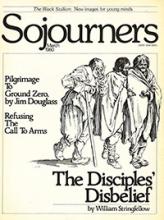If it is our death that Jesus died on the cross, there is in the cross the constraint of an infinite love. --James Denney
From the teaching of Jesus and from his crucifixion we can know that murder is the central negative motif in human history. There is murder at the beginning, at the middle, at the close: The righteous son is killed; God's righteous Son is executed; followers of the Son are slain. Jesus, crying out to the doctors of the Law and the Pharisees (Matthew 23), could summarize the history of Israel, negatively seen, as the ever-repeated rejection and killing of the men of god, from Abel in the first book of the Hebrew scripture to Zechariah in the last book (2 Chronicles). Jesus saw that the sequence was about to reach its culmination in what would be done to him. This summary was given still more vivid expression in the parable of the wicked husbandmen who mistreat or kill one representative after another sent by the owner of the vineyard and finally kill the owner's son. (Mark 12:1-9 and parallels).
Jesus stressed that his followers could expect treatment comparable to that given him. Stephen confronted his antagonists with a similar survey of Israel's history, now including its culmination; and with his death by stoning, the murder sequence continued. In the gospel apocalypses and in Revelation, the close of history is depicted as a time filled with catastrophe and mass slaying, especially of the people of God.
Read the Full Article

